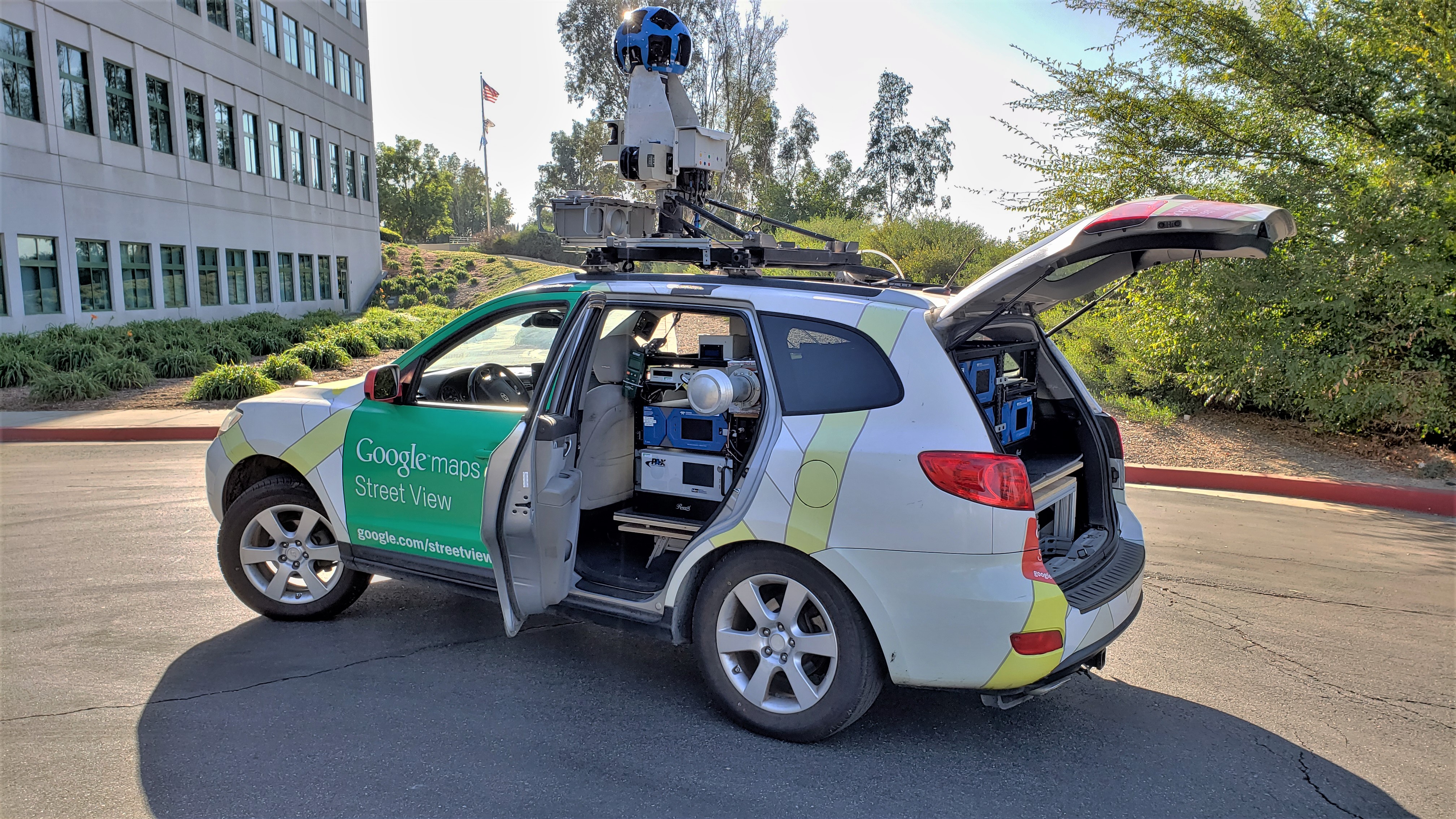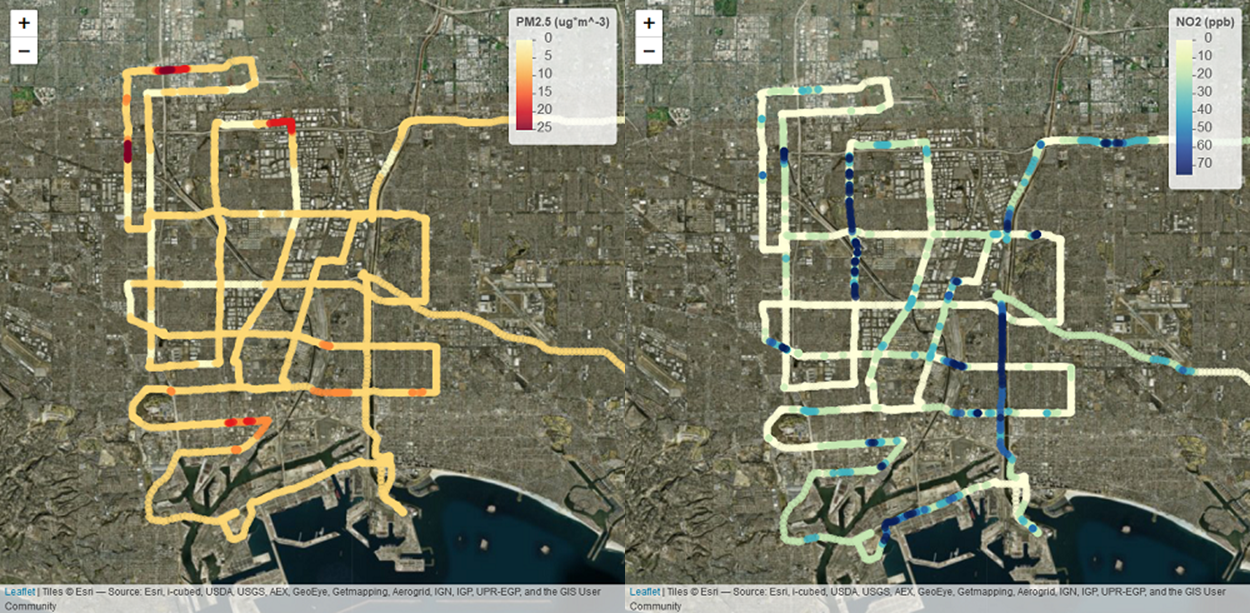The Air Quality Sensor Performance Evaluation Center (AQ-SPEC) at South Coast AQMD is progressing toward incorporating testing air quality sensors on moving vehicles into the program. Sensors are evaluated in three mobile installation scenarios: 1) mounted inside a controlled-flow duct on the vehicle rooftop to fully protect sensors from turbulence; 2) mounted inside a simple box enclosure with inlet and outlet holes to provide partial protection from turbulence; and 3) mounted on the vehicle rooftop with no further protection.
The experiences gained from development of previous iterations of mobile measurement and testing platforms are informing the buildout of a next-generation mobile testbed that is designed to properly sample PM10, PM2.5, ultrafine particles, O3, NO2, CO, and CO2. The design of the current mobile platform and its sampling equipment incorporates advanced modeling techniques (i.e., computational fluid dynamics) to reduce particle losses to reference monitors and turbulence experienced by sensors. The presentation of the latest mobile platform developments at the 39th AAAR Annual Conference in 2021 summarizes some of these advancements and is available here.
These advancements have been made in tandem with the development of the first-ever performance evaluation protocol for sensors deployed on a moving vehicle. The protocol tests the agreement between reference-grade instruments and sensors mounted in various scenarios, such as inside a rooftop box.
This protocol was pilot-tested with different sensor models, and the testing process revealed information that would be useful to organizations and individuals looking to use such sensors for mobile monitoring. For example, one of the sensors was found to be greatly affected by driving speed when mounted on the vehicle rooftop and completely exposed; however, by placing the sensor inside of a box to partially shield it from turbulent winds while moving, the sensor was found to have better agreement with readings from the reference-grade instrument. The pilot-testing also found that the correlation and accuracy of sensor measurements varies with driving speed, and that driving on local roads slowly can provide better measurements than those collected while driving on freeways at high speeds. The results of pilot-testing this novel evaluation protocol were published in Environmental Science and Technology as an open-access article (https://pubs.acs.org/doi/abs/10.1021/acs.est.0c05955). The full protocol is available here.
South Coast AQMD partnership with Google for Mobile Sensing Project
In a 2019 partnership with the Google Earth Outreach program, AQ-SPEC tested the performance of air quality sensors on moving vehicles. As part of this project, sensors collected measurements of ambient air on a Google Street View car driving through different locations.
The project was intended to analyze the potential and limitations of sensors for measuring fine particulate matter (PM2.5), ozone (O3) and other air pollutants and determine which types may be best suited for mobile uses. In addition, this project informed the development of the aforementioned mobile evaluation protocol and next-generation mobile platform.
Figure 1. Google Street View Car at South Coast AQMD's AQ-SPEC

AQ-SPEC has been conducting stationary field and laboratory testing of commercially available sensors since 2014, and this new project provided additional information on the performance of sensors when used in mobile monitoring applications. This is particularly important for community scientists and groups that are interested in conducting mobile measurement surveys at the neighborhood level.
Figure 2. Example of a test route for the performance evaluation of sensors for measuring PM2.5 (on the left) and NO2 (on the right). Measurements were conducted on board of a Google Street View car in the Wilmington/West Long Beach/Carson area on August 26, 2019.
Mobile sensors gathering street level data will allow collection of more air pollution information over a much larger area than traditional air monitoring technologies that stay in one location. These mobile measurements are expected to demonstrate how much pollution can change over very short distances, such as a city block or throughout a neighborhood.
Given their comparatively low-cost compared to traditional fixed-site equipment, when proven to be accurate and reliable, mobile sensors could also become useful tools for introducing students to air quality issues, and for environmental groups and individuals to independently evaluate air quality.